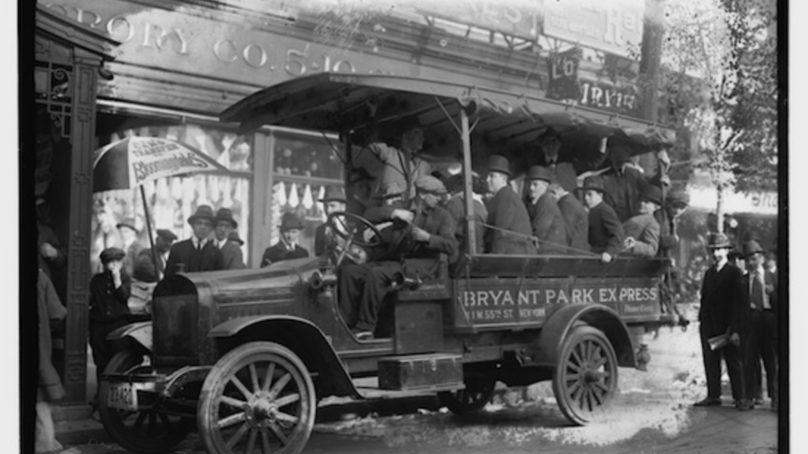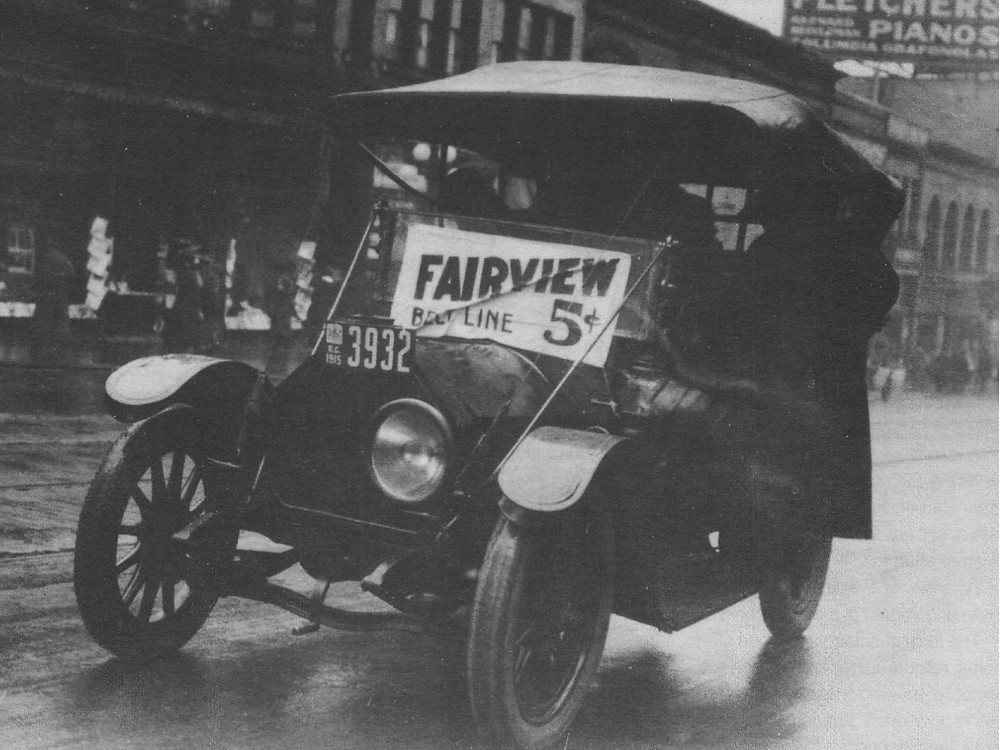
It may come as a surprise, but ridesharing has existed for over a century in the United States. Since the early 1900s, entrepreneurial drivers with spare time and capital have formed informal share-economies that at times have grown to challenge even the most established transportation providers. But until recently, rideshare use has reached a “critical mass” of demand capable of sustaining its market. The U.S. rideshare market is expected to grow by 19.2 percent annually, from $11 billion in 2017, and something that is worth investigating is how its rapid, unrestrained growth has crippled the rideshare market in the past and the lessons that the industry can learn from the jitney era that will inform the decisions that it makes to support this new era of ‘ridesharing’ into the future.
The Jitney Movement: When Convenience and Economy Come Together for the First Time
The arrival of the rideshare concept can be traced back to July 1, 1914, in Los Angeles, California. On that day, L. P. Draper was driving along the streets of Los Angeles in his Ford Model T when he was compelled to pull over and pick up a stranger who needed a ride. After agreeing to transport his new passenger a short distance, Draper was paid five cents for his services.
Colorfully referred to as a “jitney,” the impromptu ride service ushered in a brief but spectacular national trend in informal shared transportation. There was no science to the jitney operation. Drivers would simply place a “jitney” sign upon their windshield and shadow streetcar routes in pursuit of customers. For price-sensitive customers in recession-era 1914, the prospect of taking a jitney ride was favorable. Not only were jitney rides cheap, they also operated more efficiently than streetcars, often slashing travel times in half for commuters.

There were four driving factors that led to the arrival of the first rideshare movement:
- A Challenging Economic Environment Leads to Need-based Innovation: The birth of the jitney movement was a natural extension of the precarious economic prospects of the time. By the end of 1914, an estimated one million workers had been laid off or remained unemployed in the U.S.
- Consumers Frustrated with Limited Options: By the turn of the 20th century, the average worker living in a city of 10,000 or more people rode public transportation, often a streetcar, 252 times per year. In 1914, streetcars held a monopoly status in America’s cities. With no one to hold them accountable for the quality of their industry, streetcar operators often took a take-it-or-leave-it approach toward passengers.
- Fundamental Change Catalyzed by Capital Investment: With public sentiment toward streetcars at its nadir and unemployment on the rise, the stage was set for a transportation revolution to occur. All that was required to catalyze this change was the necessary capital. In 1908, Henry Ford’s Rogue River production plant began producing what would become the world’s most popular car. A car built for “the great multitude,” Ford’s Model T found great commercial success thanks in large part to the adoption of moving assembly lines at his plants.As production efficiency increased, the price of Ford’s cars dropped precipitously. Between its induction in 1908 and the end of its production in 1927, the price of the Model T dropped steadily from $850 to $250 per car. Selling only 5,896 Model T’s its first year, by 1916 the car sold a record 377,036 models.
- Consumers Are Attracted to Transformative, Fashionable New Products: The movement’s novelty was significant. Most commuters had never been inside an automobile before, and many desired to feel the rush of riding in a car for the first time.
What Goes Up Must Come Down
As inspirational as the rise of the jitney movement was, many predicted that the streetcar interests would likely use their political clout to stimulate regulatory obstacles that would inhibit the movement’s growth. Government officials had an incentive to regulate the movement. Whereas streetcars operations were subject to taxation, jitney-based travel was not. Consequently, several municipal and state governments saw major declines in tax revenue in a matter of weeks or months. Compounding the obstacles that the movement faced were safety concerns, which were increasingly voiced by the nation’s media outlets.
By July 1915, the one-year anniversary of the movement’s inception, public opinion had officially turned. Twenty-seven municipalities had already imposed burdensome liability costs to all jitney drivers. Drivers were compelled to post up to $10,000 in liability insurance, biting into 25 to 50 percent of drivers’ annual earnings. Of the 62,000 jitney drivers in operation in 1915, 21,000 had ceased operations by the following year. By 1918, the number of jitney drivers dwindled to a mere 6,000.
Takeaways for 2018
The adoption of rideshare has historically been rooted in the fulfillment of unmet market needs. Individuals looking to supplement their income often possessed an excess of time and capital that they were willing to expend through the chartering of time-sensitive consumers. For their part, consumers opting into jitney-based travel were often forgoing the inefficiencies that plagued their regular travel network. All things being equal, travel by jitney was an economic substitution for consumers otherwise limited in their options.
Despite its brief life, there were several patterns in the jitney movement that are very similar to those that influence the rideshare market today. If the rideshare market is to continue its path of growth, it will need to overcome the organizational constraints inherent to its nature. Technological innovations and software platforms have certainly worked to better some of these issues by providing real-time demand capabilities to rideshare users.
But significant historical threats that are thematic to the market remain unaddressed and are likely underappreciated due to the animal spirits propelling current rideshare growth. These threats include uncertainty due to technological innovation, shifts in consumer preferences, economic fluctuations and over-zealous or unsupportive government regulation and policies.
About the Author
Rachel Allen is Director of Product, Shared Mobility at Arity.


